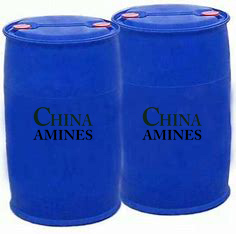1. Chemical Structure and Properties
Molecular Formula: CH₃OH
Structural Formula:
A simple alcohol with a hydroxyl (-OH) group bonded to a methyl group (-CH₃).
Physical Properties:
Appearance: Clear, colorless liquid with a faint alcoholic odor.
Boiling Point: 64.7°C; Density: 0.79 g/cm³; Vapor Pressure: 97 mmHg at 20°C.
Solubility: Fully miscible with water, ethanol, and most organic solvents.
Chemical Properties:
Flammability: Highly flammable (flash point: 11°C; autoignition temperature: 464°C).
Reactivity: Oxidizes to formaldehyde (HCHO) and formic acid (HCOOH) via alcohol dehydrogenase.
Participates in esterification, etherification, and transesterification reactions.
2. Industrial Applications
Fuel & Energy:
Biofuel Additive: Blended with gasoline (e.g., M85) or used in biodiesel production.
Hydrogen Carrier: Feedstock for hydrogen generation in fuel cells.
Chemical Synthesis:
Formaldehyde Production: Primary feedstock (~40% global methanol use).
Acetic Acid: Synthesized via carbonylation (e.g., Monsanto process).
Olefins: Methanol-to-olefins (MTO) technology for ethylene and propylene production.
Solvent Industry:
Denaturant: Added to ethanol to prevent human consumption.
Extraction: Used in pharmaceuticals and natural product isolation.
Emerging Uses:
Marine Fuel: Green methanol for decarbonizing shipping (e.g., Maersk’s methanol-powered vessels).
3. Safety and Toxicology
Health Hazards:
Acute Exposure:
Inhalation (≥200 ppm): Headaches, dizziness, and CNS depression (TLV-TWA: 200 ppm).
Skin Contact: Defatting action causes dermatitis; systemic absorption possible.
Ingestion: Extremely toxic (oral LD₅₀ human: ~1 g/kg); metabolic acidosis, blindness, or death via formic acid accumulation.
Chronic Effects:
Neurotoxicity: Optic nerve damage (methanol-induced blindness).
Reproductive Toxicity: Limited evidence of teratogenicity in animal studies.
Protection Measures:
PPE: Nitrile gloves, vapor respirators, and explosion-proof ventilation.
Antidote: Ethanol or fomepizole to inhibit alcohol dehydrogenase.
4. Environmental and Regulatory Compliance
Environmental Impact:
Biodegradability: Rapidly degraded aerobically (OECD 301F: >90% in 28 days).
Aquatic Toxicity: LC₅₀ (fish, 96h): >1,000 mg/L; low bioaccumulation (log Kow: -0.77).
Air Emissions: Contributes to ground-level ozone (VOC classification).
Regulatory Frameworks:
EU:
CLP: Classified as Flam. Liq. 2 (H225), Acute Tox. 3 (H331).
REACH: Registered; restricted in consumer products above 3% concentration.
USA:
OSHA: Permissible Exposure Limit (PEL): 200 ppm (8-hour TWA).
EPA: Regulated under Clean Air Act (VOC) and CERCLA (Reportable Quantity: 5,000 lbs).
China:
GB 13690-2009: Classified as Hazardous Chemical (Class 3.2).
Waste Management:
Incinerate in approved facilities; wastewater treatment via biodegradation.
5. Case Studies and Application Insights
Case 1: Green Methanol for Shipping (Maersk, 2023):
Innovation: Deployed dual-fuel methanol-powered container ships.
Impact: Reduced CO₂ emissions by 80% vs. conventional marine diesel.
Case 2: Methanol Poisoning Outbreak (Libya, 2023):
Incident: Illicit alcohol contaminated with methanol caused 101 deaths.
Response: Public health campaigns and ethanol antidote distribution.
Comparative Analysis:
Methanol vs. Ethanol:
Pros: Lower cost, higher energy density, and broader chemical feedstock utility.
Cons: Higher toxicity and flammability risk.
Methanol vs. Hydrogen:
Pros: Easier storage/transport; existing infrastructure compatibility.
Cons: Lower energy efficiency due to conversion losses.
Specifications:
Methyl Alcohol (Methanol) is a colorless, flammable liquid with high solvency and low toxicity, widely used as a solvent, fuel, and in chemical manufacturing, available in bulk from China Amines Co.


